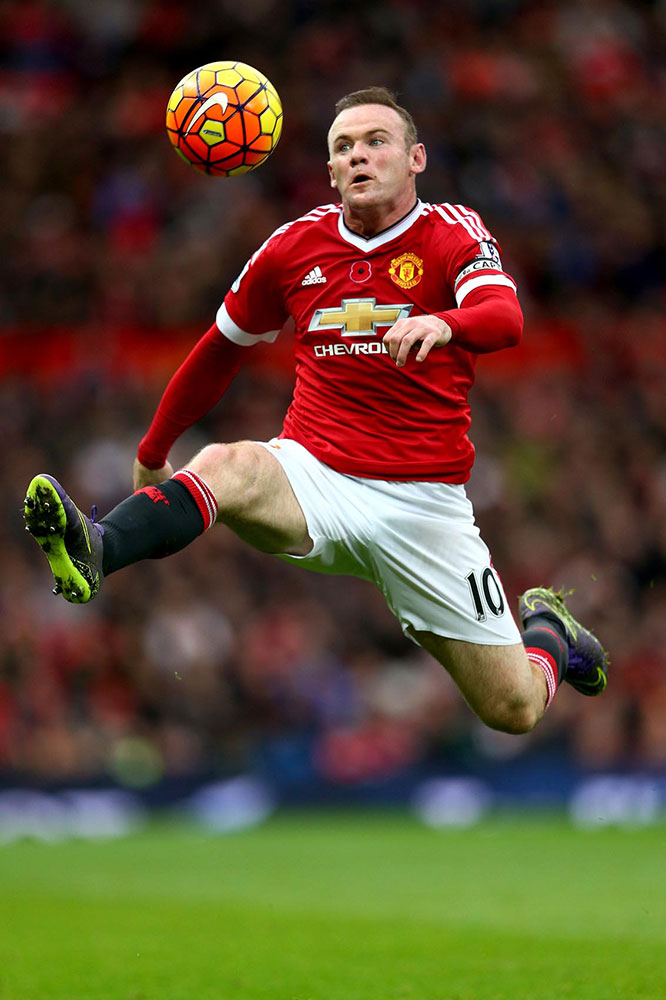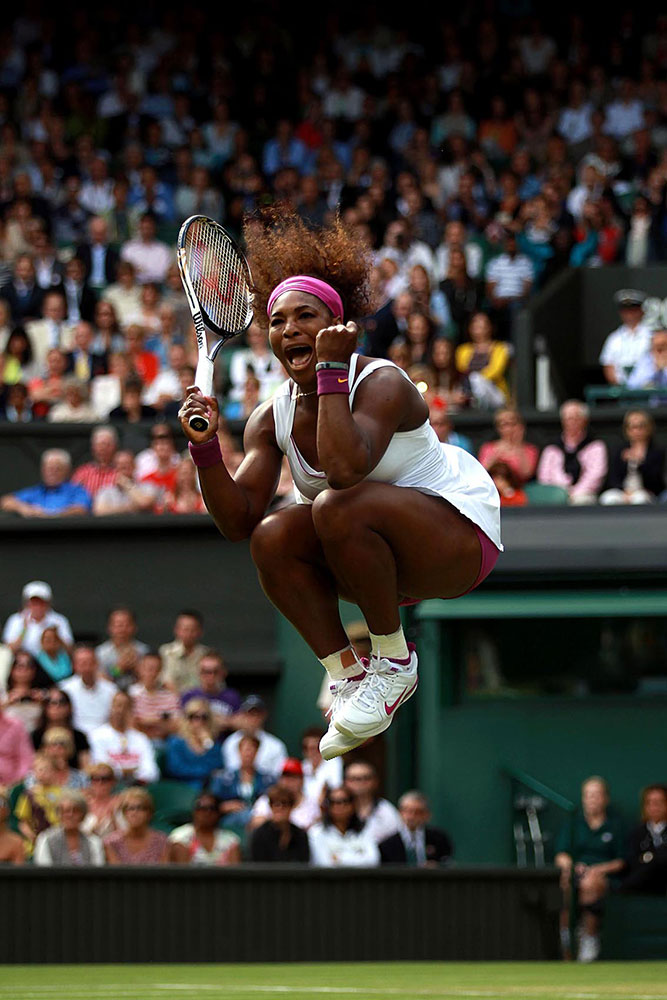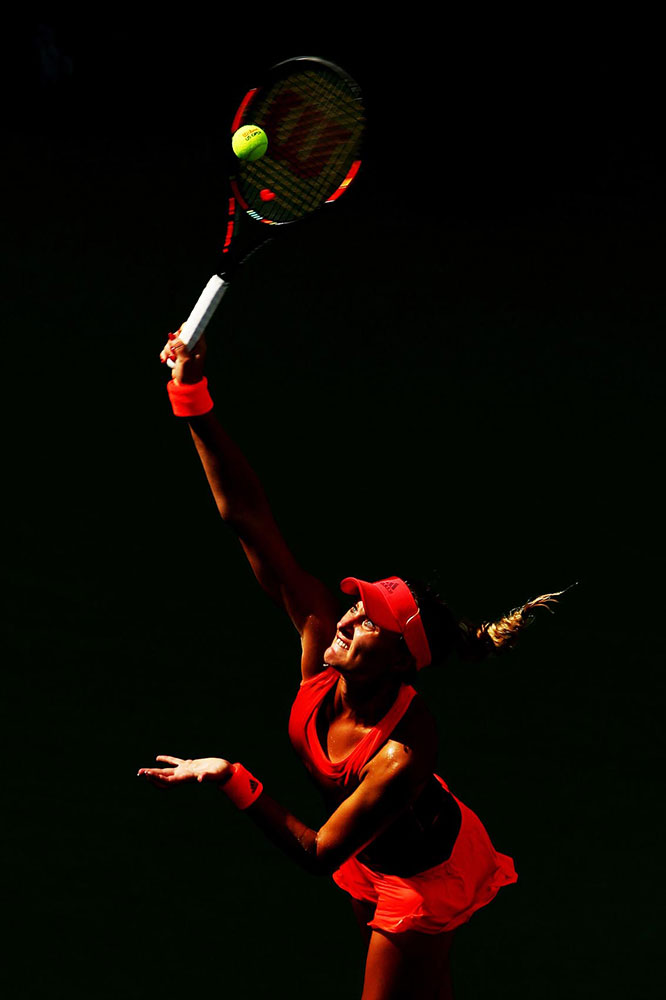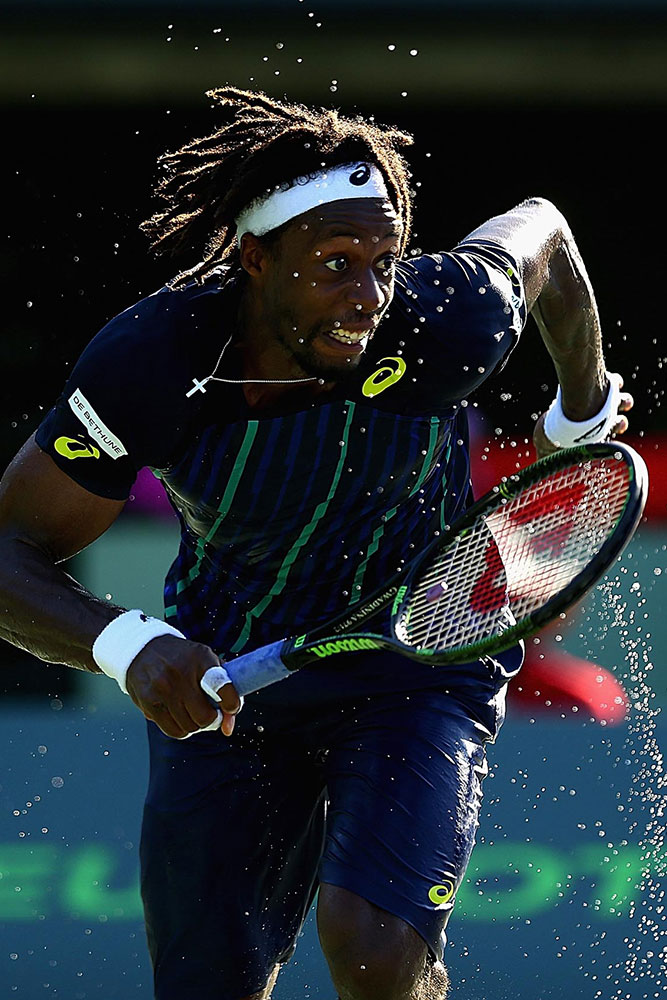Acclaimed sports photographer Clive Brunskill won his first photo award when he was still in college, which led to multiple job offers.
In the 35 years since, the Getty Images shooter has covered every major sports contest going, picking up multiple awards for his pictures that continue to grace the covers – and sports pages – of major publications around the world. But Brunskill is no ordinary sports photographer. Early on in his career, the Brit’s consistently stunning work captured the attention of major global brands such as Nike and Adidas, prompting them to hire him for their own marketing campaigns — spots that often involve the very sports stars Brunskill captures for Getty.
Brunskill recently spoke with Digital Trends and gave some insight into his work, while explaining what it takes to become an ace sports shooter.
Digital Trends: Which sports do you enjoy photographing the most?
Clive Brunskill: Tennis and football [soccer]. Tennis is my number one sport as it’s where I’ve really built up my reputation as a professional sports photographer. It’s been a long road since 1990 when I really started to specialize in the sport, but getting to know the players and shooting the sport in so many different ways – from sunlight to floodlight to indoor and on the four different surfaces – makes it really interesting. It’s also helped that I’ve become friends with a lot of the top stars that play the game today.
Can you describe your workflow for a single sports event?
For a Premier League football match, for example, I’d get there at least three hours before kick-off. Then, I pick my position for the match depending on where the LAN cables are – vital as you have to be able to transmit the picture quickly. Once a test is sent to the office via either the camera directly or my laptop, I then shoot previews for the match – things like fans arriving, general views of the stadium, and the teams arriving.
I make my way to the pitch 20 minutes before the start and do one last test for the communications. Once the match starts it’s 100-percent concentration for 90 minutes.
You need a lot of skill keeping your exposures constantly correct and lots of concentration trying to read what may happen on the field. And finally, lightning-quick reflexes. On the field things only happen once, and in a millisecond; it’s not a studio so there are no second chances.
I normally tag and send all news-based, time-sensitive pictures as soon as they’re shot. The editor back in the office goes to my FTP folder, pulls the images as they drop, places a template of all the match information, and then captions them. Usually it’s around 90 seconds from taking the image in-camera to getting it out to the clients. However, this all depends on the speed of the communication lines.
At a stadium event, are you free to pick your spot?
At key events, like the World Cup or Olympics, access is determined by the importance of the agency or media who have photographers assigned.
For example, at the World Cup it’s not a free for all. We have a stage system so big international agencies such as Getty Images, Reuters, AP, AFP, and the local national agency will walk out onto the pitch to assigned seats, then newspaper photographers, and finally the freelance photographers.
How did you transition from shooting sports matches to ads?
It was a natural progression from shooting editorial football to being noticed by some of the big advertising agencies, because my live-event action photography was at a good level.
On the field things only happen once, and in a millisecond; it’s not a studio so there are no second chances.
Advertising agencies may need a football photographer to shoot a campaign for Pepsi or Nike, but they want a real football photographer who can get a realistic look with their chosen athlete. That’s how my relationship with Pepsi started in 1997. The work with them has been a mix of studio action photography with high speed flash and portraiture of some of the most famous footballers on the planet, among them David Beckham.
Can you describe a shot of which you’re particularly proud?
The Blur album cover for Parklife. This photograph was shot out of an obsession of mine to freeze greyhounds in full flight. I got lucky with this particular image as it was one of the few daylight meetings in the country. I’ve always been fascinated by freezing movement, whether mud flying off football boots or greyhounds in full flight. I think the photograph turned out the best I could’ve hoped for as there were only two races with the sun on the track due to the low, fast-moving winter sun. A couple of years later I happened to be walking past a record shop and Blur had the number one album Parklife with my picture on the cover. An advertising agency had seen the image and bought the rights to it for album CD and sheet music. It’s since been voted one of the 10 best UK album covers of all time and even appeared on a British stamp.
What aspect of your job do you love the most? And what’s the toughest part?
I love the excitement of a big event, not knowing what pictures it’s going to give you. The toughest part of the job is definitely the travel and spending four to six months a year away from home and family. Going to new places is exciting, but I’ve been around the world more than 50 times already. New York, Sydney, and Los Angeles just aren’t the same on your 30th visit.
How important is physical fitness for a professional sports photographer?
Very important, especially as you get older, as the job entails carrying some seriously heavy equipment for up to 12 hours a day, and standing for most of that time. There’s no excuse not to stay fit when you’re working around such incredibly fit athletes. My fitness regime includes running and weights.
What are the top three skills you’d say are necessary to become a successful sports photographer?
Patience, dedication, and being organized.
What were some of the biggest challenges that faced you as a young professional just starting out?
Starting out, most of the challenges were down to using old, cheap, second-hand equipment. Another big challenge was having to develop films on location in toilets or press rooms and then printing the image. This was complicated by having to carry all this kit to overseas countries. In 1995-1996 we had to take enormous digital film scanners with us – the excess baggage bills were sometimes double the cost of your original airfare!
Transitioning from film to digital also presented its own challenges, particularly around the time when film was so good. But clients wanted digital for ease of re-touching. We had to sacrifice the quality slightly. Also the software and memory storage was a problem with improved cameras coming out what seemed like every six months.
What tips or advice can you give to young photographers interested in making a career in sports?
It’s a hard slog, and depending if you also want to do sports advertising alongside editorial sports, then you need to dedicate many hours and all your weekends to shooting sport. It’s a bit like being an athlete – the levels of dedication are similar, you just don’t need to be quite as athletically fit!
Clive’s Canon kit:
- 3 EOS-1D X mk 2 bodies (the latest from Canon)
- 2 EOS-1D X bodies for remote cameras in the back of football goals
- 500mm f4 new generation Canon AF lens – great for tennis at back of stadium
- 400mm f2.8 Canon AF lens for football
- 300 f2.8 Canon AF lens for tennis and sometimes football
- 200 f2 Canon AF lens for very low light indoor sports
- 70-200 f2.8 Canon AF lens for football goal mouth action and Wimbledon tennis
- 24-70 f2.8 Canon AF lens for feature work
- 16-35 f2.8 Canon AF lens for sports news feature work and stadium general views
- 15 f2.8 Canon AF lens for general views
- 14 f2.8 fisheye, Canon lens for occasional use
- Two Canon flashguns
- 2x teleconverter Canon series 2
- 1.4x teleconverter Canon series 3
- An array of Pocket Wizard triggers for remotes
- A cable set of remote triggers for when there’s too much radio interference at very large sporting events, for example the Olympics or the FIFA World Cup
- Monopods and tripods, always Gitzo
- Bags, always Domke or Think Tank for the roller bags
- Lens trunks various sizes for aircraft holds, always Lightware or Versaflex
- Laptop for transmission







